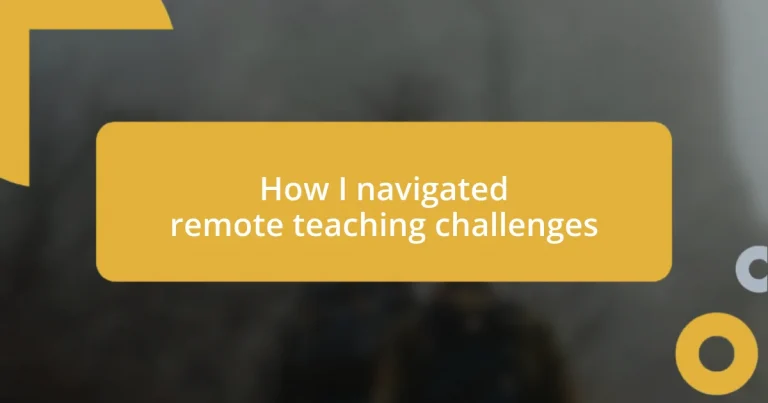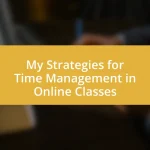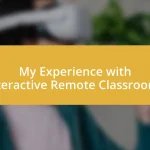Key takeaways:
- Transitioning to remote teaching highlighted the challenges of engagement and motivation, prompting the use of interactive strategies like live quizzes and multimedia resources.
- Effectively utilizing technology, such as collaborative platforms and social media, enhanced communication and facilitated deeper connections among students and between educators and families.
- Regular feedback and gamified learning fostered student motivation, while personalized lessons that connected to students’ interests created a richer and more engaging educational experience.
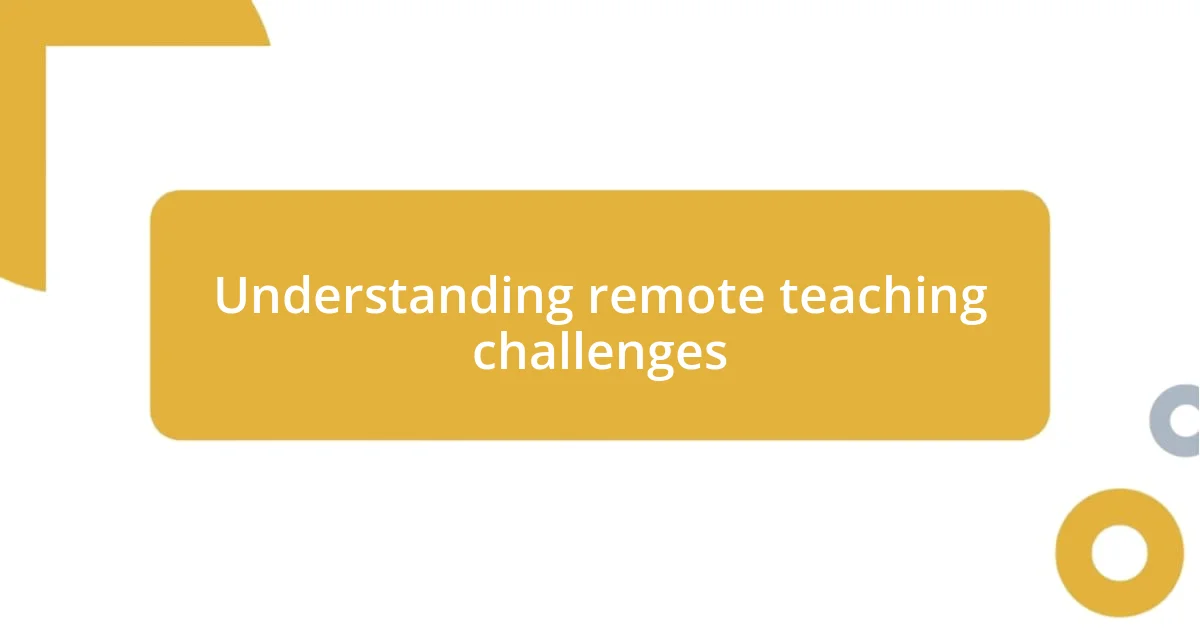
Understanding remote teaching challenges
When I first transitioned into remote teaching, I quickly realized how isolating it can feel. The absence of a physical classroom made me question my connection with students. Were they truly engaged, or just learning through a screen? These questions lingered in my mind as I navigated the challenges of virtual communication.
One major hurdle I faced was the lack of immediate feedback. In a traditional classroom, I could gauge understanding through facial expressions or body language. However, with students muted and behind cameras, I was often left second-guessing if they grasped the material. That uncertainty was frustrating and, at times, disheartening.
Moreover, keeping students motivated in a virtual setting proved to be a constant battle. I found myself searching for creative ways to make lessons interactive, whether through breakout rooms or gamified activities. Yet, there were days when no amount of enthusiasm could bridge the gap of distance, leaving me to ponder: how do we foster genuine engagement when physical presence isn’t an option?
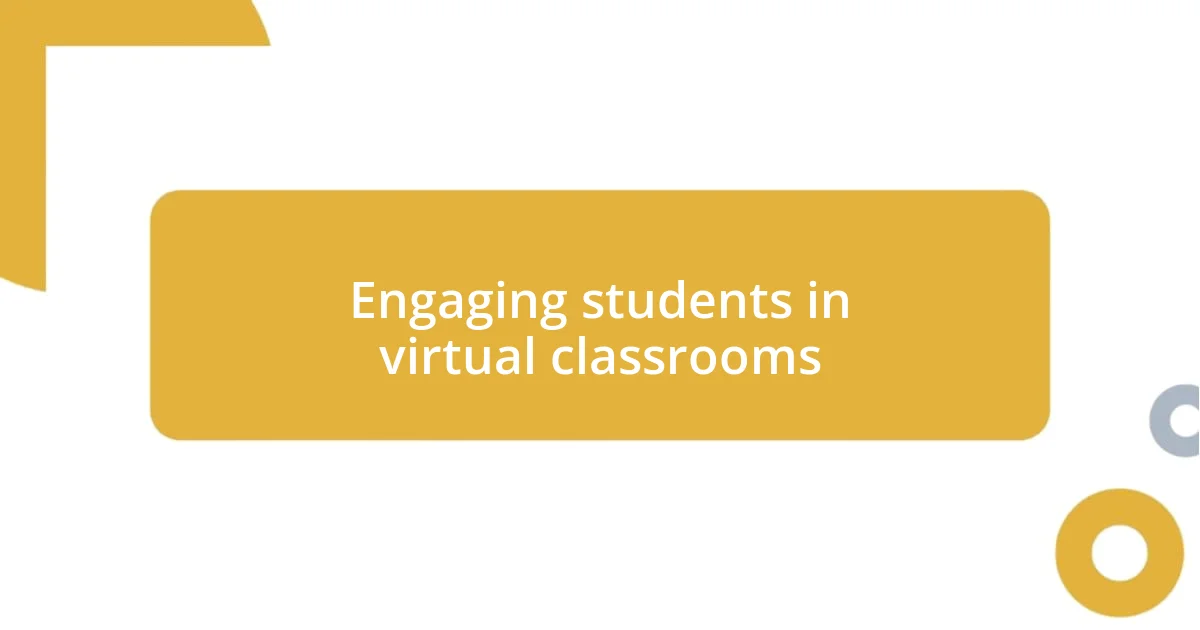
Engaging students in virtual classrooms
To truly engage students in virtual classrooms, I employed a variety of strategies that went beyond simply delivering content. I vividly remember hosting a live quiz one afternoon, where students could answer questions in real-time through a platform. It was exhilarating to see their faces light up as they competed for points. The energy shifted dramatically when I integrated fun elements; that day reminded me just how powerful interactivity can be in maintaining connection and enthusiasm.
Here are some tactics I’ve found useful:
– Use of polling tools: Quick polls or quizzes can spark interest and provide immediate feedback.
– Breakout rooms for discussion: Smaller groups created a sense of intimacy where students felt more comfortable sharing ideas.
– Incorporating multimedia: Videos, music, and interactive content can break the monotony and keep students engaged.
– Themed lessons: Connecting the lesson to current events or popular culture can make the material more relatable and exciting.
– Regular check-ins: Asking about their well-being and interests made students feel valued, fostering a more inclusive environment.
In my experience, the more I personalized the virtual classroom, the more invested my students became. Creating a sense of community, even digitally, truly transformed my teaching approach.
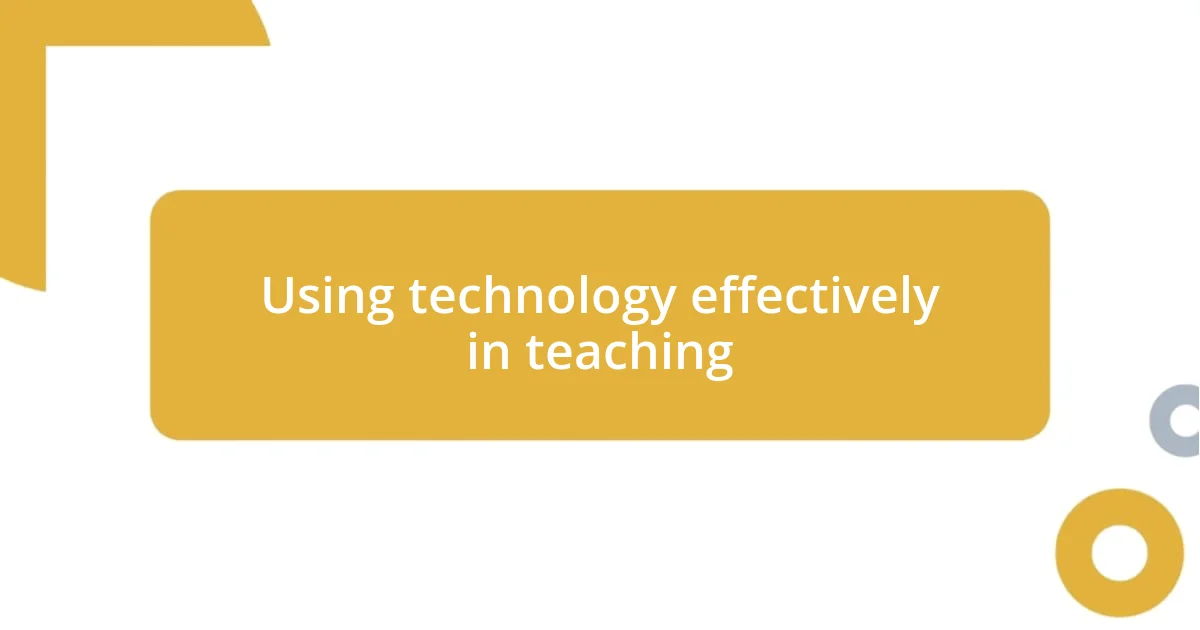
Using technology effectively in teaching
Using technology effectively in teaching requires a thoughtful approach. I learned early on that choosing the right tools can make all the difference. For instance, during one particularly challenging week, I introduced a collaborative platform where students could co-create projects. Watching them support each other in real time was inspiring. It solidified my belief: technology is not just a replacement for in-person interaction; it can enhance and transform the learning experience.
Another vital lesson I discovered is the importance of mastering the features of the technology I was using. I recall a lesson where I failed to set up a shared document correctly; there were moments of confusion, and I could sense students’ frustration. After that experience, I took the time to familiarize myself with every tool available. By becoming proficient, I could focus on facilitating learning rather than troubleshooting. This preparedness ultimately resulted in smoother lessons and boosted student confidence in using the tools themselves.
Lastly, leveraging the power of social media turned out to be a game-changer. I created a dedicated group for students to share resources and discuss topics outside of class hours. One evening, a student posted an article about a recent scientific breakthrough, sparking a passionate discussion that went well into the night. Engaging students where they already are can foster deeper connections and sustain excitement about learning. The more I embraced technology, the more I realized its potential to create vibrant learning communities.
| Technology Tool | Purpose |
|---|---|
| Polling tools | Encourage student participation and obtain instant feedback |
| Breakout rooms | Facilitate intimate discussions among smaller groups |
| Collaborative platforms | Enable students to work together on projects in real time |
| Multimedia resources | Enhance lessons and maintain engagement through diverse formats |
| Social media groups | Create a space for ongoing conversation and resource sharing |
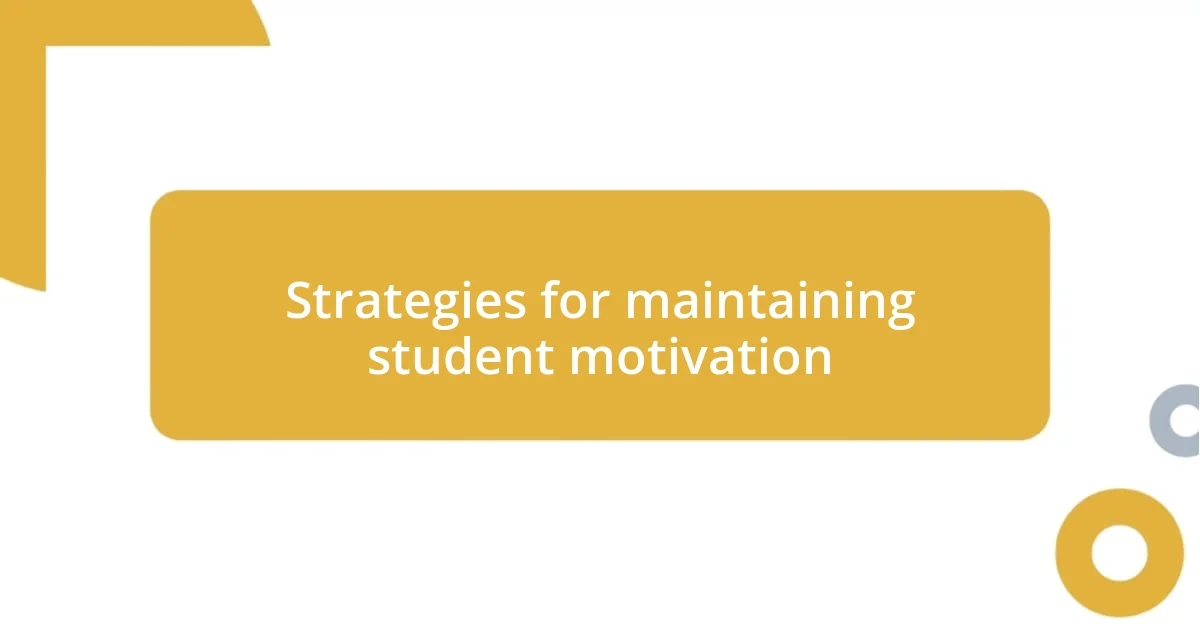
Strategies for maintaining student motivation
One strategy that worked wonders for maintaining student motivation was incorporating frequent feedback. I remember a time when I decided to end each class with a quick feedback session. Students would share one thing they found interesting and one area they struggled with. Seeing their faces brighten as they acknowledged their wins filled me with pride, and their honest sharing of challenges led to meaningful improvements in my teaching approach. It created a space where students felt heard and valued—an essential part of keeping them engaged.
Another effective tactic I discovered was gamifying learning. In one class, I transformed an entire week of lessons into a friendly competition. Students collected points for participation, collaboration, and creativity. I still chuckle when I think about the playful banter that unfolded during discussions. It struck me how motivating it was for everyone to strive for points—not just for the sake of winning, but to see their individual and collective progress. Who wouldn’t want to be part of a lively competition where learning feels like a game?
Additionally, I found that connecting the curriculum to students’ personal interests sparked immense motivation. I often asked them to share their favorite hobbies or topics they were passionate about. For instance, when a student shared their love for video games, I devised a lesson around game design principles. Watching their faces light up with enthusiasm while they engaged with the material was a powerful reminder: when we tie education to what students genuinely care about, we create a richer learning experience. Have you ever seen the difference in energy when you discuss something that excites you? That’s exactly the kind of motivation I aimed to harness in my virtual classroom.
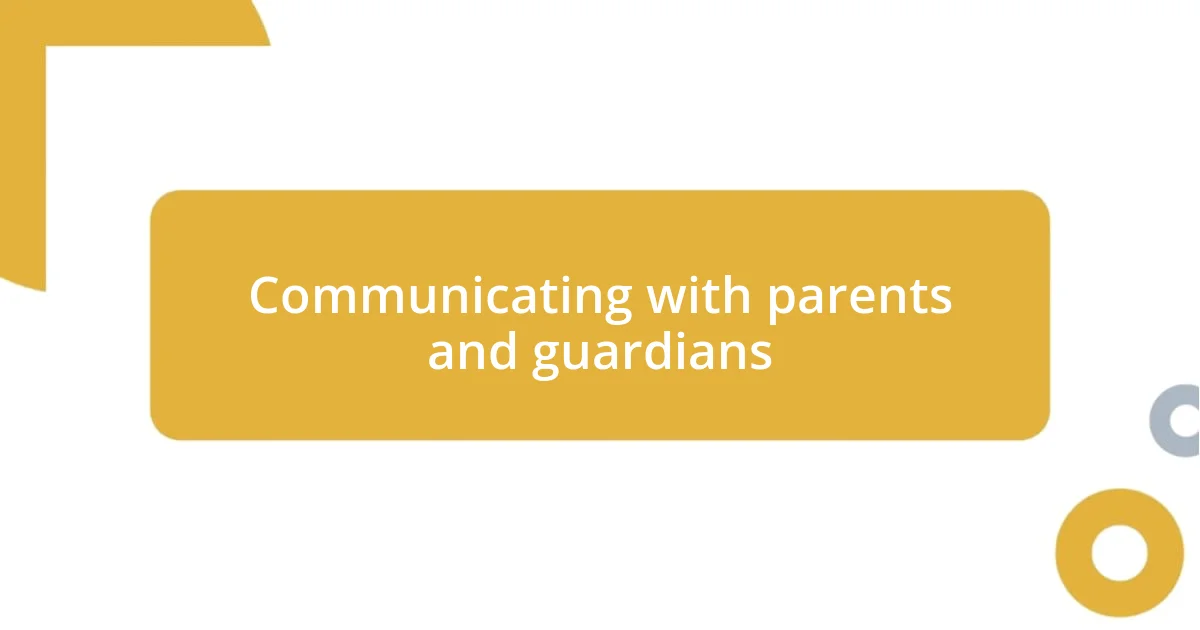
Communicating with parents and guardians
When it came to communicating with parents and guardians, I quickly realized how crucial it was to foster an open line of dialogue. I remember sending out weekly emails summarizing our lessons and addressing any concerns parents might have. One parent replied, expressing gratitude for the regular updates, stating they felt more connected to their child’s learning journey. This feedback reinforced my belief that transparency can build a strong partnership between educators and families.
I also incorporated virtual meetings to discuss students’ progress and any challenges they were facing. There was a memorable session where a parent shared their frustration about their child’s declining motivation. As I listened, I could sense their emotional investment; it made me think about how vital it is for us, as educators, to be empathetic. After discussing strategies, we brainstormed new ways to engage their child, and I could feel the shift in optimism. This connection made me realize that sometimes, just being present and listening can be the most powerful communication tool.
Using digital platforms for communication became a game-changer. I set up a group chat for parents to ask questions and share insights. I still vividly recall a moment when a parent shared a resource that sparked a fantastic discussion among our students. That simple act of collaboration made me think: how often do we miss out on valuable insights from parents? Their engagement enriched our community and reaffirmed that effective communication benefits everyone involved in the learning process.












